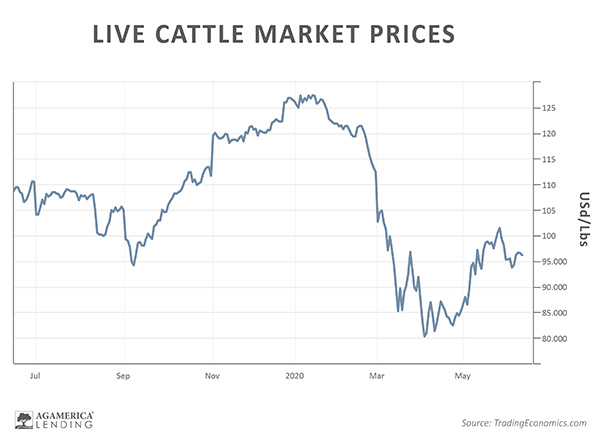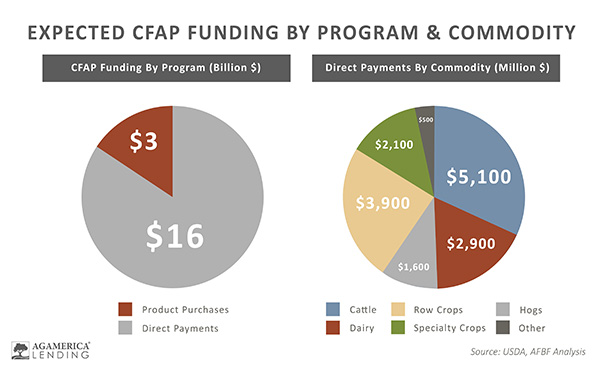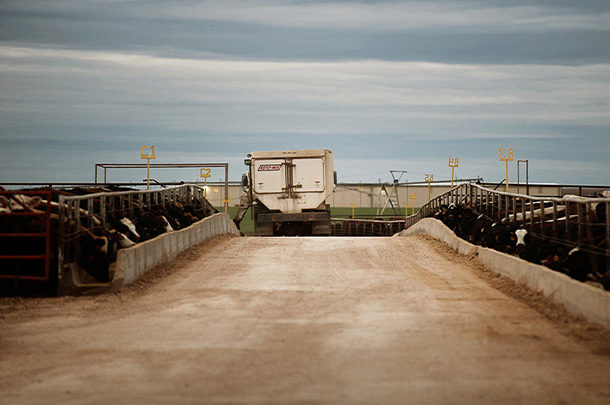Temporary closures of nonessential businesses and schools sharply shifted supply demands in a way that was difficult to redirect. Add in reduced production capacity from the nation’s largest meat processors, leaving ranchers to face a supply backlog estimated at nearly one million head of cattle.
Global trade fell to historic lows as stay-at-home orders were in place worldwide and countries closed their borders to avoid viral spread. An estimated $1.5 trillion loss in economic output was reported in the first quarter of 2020.

This loss translated to a drop in futures prices for live cattle, reaching its lowest point in the last ten years during the month of April. Yet despite unprecedented adversity, American ranchers continued providing quality beef with remarkable resilience and innovation.
How American Ranchers Have Responded to These Challenges
The Innovative Use of Technology
Technology made it possible for ranchers to redirect supply to consumers in several ways. R-Calf USA’s online platform connects independent cattle producers to consumers in their local area. Social media and direct sales software platforms also made it possible for ranchers to market available products. Direct sales to consumers will likely carry on past the pandemic.
Collaboration with Local Butchers
With temporary closures and reduced production of major slaughterhouses, ranchers collaborated with local butchers to process meat for consumers and keep our meat supply stable. Although plants have reopened between 50 and 95 percent capacity, some ranchers will likely continue to utilize local slaughterhouses moving forward.
The Government’s Fiscal Response to Support U.S. Agriculture
The meat industry was undoubtedly one of the most impacted agricultural sectors, with estimated losses reaching over $13 billion in the cattle sector. The USDA took this fact into consideration when distributing the $19 billion in funds for impacted farmers and ranchers. Two relief assistance programs created for ranchers include the Farmers to Families Food Box Program and the Coronavirus Food Assistance Program (CFAP).

Farmers to Families Food Box Program
This $3 billion initiative was announced by Secretary Sonny Perdue and aims to purchase and distribute agricultural products to those in need. Of the $3 billion, $258 million was apportioned for meat purchases. Awarded applicants were required to distribute:
- A fresh fruit and vegetable box;
- A dairy product box;
- A pre-cooked meat box; or
- A combination box.
As of June 8th, five million boxes have been distributed with a goal of 40 million boxes by June 30th. Feedback for the USDA program has been mixed, some positive while others say the program has unclear requirements and question the merit of certain contracts awarded. Reports of pulled contracts have also created frustration, costing ranchers and farmers participating in the program even more than losses already incurred.
Coronavirus Food Assistance Program (CFAP)
CFAP provides direct payments to farmers and ranchers who have experienced significant losses from COVID-19. Payments are capped at $250,000 per person and $750,000 for corporations. Eligibility requirements include:
- A five percent or greater price decline caused by COVID-19;
- Increased costs in moving inventory due to disrupted markets;
- Conservation compliance;
- No controlled substance violation; and
- Adjusted gross income of less than $900,000 for 2016 to 2018 tax years. (Note: exemption if 75 percent or more of income comes from farming, ranching, or forestry.)
Feeder, slaughter, and breeding cattle are all included under this program. Critics have expressed concerns about payment caps and lack of recognition for premium products, such as grass-fed beef. It has also been reported that the USDA will only cover livestock loss between January 15 and April 15, even though depressed market prices continued into May.
The Future of the American Cattle Industry
Despite extraordinary challenges, economists forecast a strong rebound in the second half of 2020. AgAmerica’s Chief Economist, Dr. John Penson, estimates a five to ten percent increase in economic output by the end of the year, a percentage that could likely be greater for the beef sector as restaurants reopen and demand increases.
One unknown unfolding is the trade relationship between the U.S. and China with phase one of the trade agreement hanging on by a thread. Even with strained relations from recent events, U.S. pork exports to China were up 36 percent in April from 2019. U.S. beef and veal exports to China report moderate growth, with a 13 percent increase from 2019 as of April in 2020. Overall, global beef trade is projected to decline two percent this year as the sector rebounds from COVID-19.
This pandemic has also highlighted cracks in our food supply system, instigating legislative action. The discrepancy between escalating retail beef prices and record low cattle prices led to an investigation of four major beef packers and an increase in antitrust enforcement. A recent Progressive Cattle poll found that over 90 percent of respondents support legislation to force price transparency for packers.
“One thing you can hang your hat on is whether people are in their house or out, they’ve got to eat. We’re not going to be able to shut off our food supply. Our industry is providing a necessity.”
- Brian Philpot, AgAmerica CEO.
One certainty remains, food is essential—not a luxury. In the face of a recession, ranchers provide a commodity that consumers need. The resiliency of our ranchers has sparked a renewed appreciation for American-raised beef, while opening the market to sell directly to consumers. Hardships can often lead to beautiful destinations. When we focus on what we can do as individuals to help one another in this trying time, we have the potential to come out stronger together as a nation than before. As an advocate for American farmers and ranchers, AgAmerica Lending is committed to providing access to capital in lean times through our flexible financing options. Visit our website to learn more.








